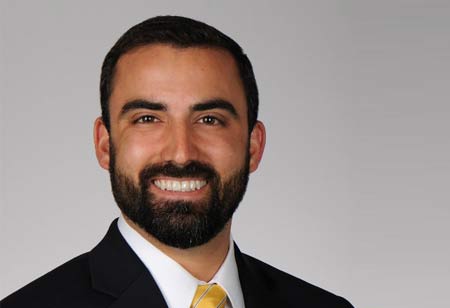Thank you for Subscribing to Healthcare Business Review Weekly Brief

Effectively Implementing Telehealth Medicine
Healthcare Business Review
This article is based on an interview with Peter Gardella, director of telehealth operations and nursing at the Medical University of South Carolina.
Role of Telemedicine in Improving Patient Engagement and Self-Management of Chronic Conditions through Remote Monitoring and Telehealth Apps
This is such an exciting time that we live in! Healthcare is catching up with the digital age at a rapid pace. Today, we see digitally enabled care that engages patients in their healthcare and integrates with their physician and care teams electronically.
One example is remote patient monitoring RPM. With RPM, patients can record their blood pressure (BP) daily, transmitted from their device to their health record, where it is immediately available to remote nurses. As needed, RPM nurses can communicate with the patient and escalate care to their provider. Patients receive automated and interactive text messages/emails with questionnaires, education, and reminders that engage them in their full treatment plan. Patients find it easier to actively participate in their health goals through mainstream technologies rather than placing the onus entirely on the patient between visits to remember or act on their providers' instructions. Additionally, the integrated nature of this service reduces care fragmentation, improves patient-nurse-provider communication, and achieves value-based quality outcomes. Did I mention this was an exciting time?
“Technology is meant to support your clinical need; never dictate what's possible.”
Challenges and Successes Faced in Your Latest Telehealth Initiatives
Early into the COVID pandemic, telehealth was deployed rapidly and widely. As visits began returning to in-person, demand for telehealth remained but was more balanced. A challenge that resulted from our continued expansion of virtual visits was the inefficiencies that came from a hybrid schedule where patients were offered virtual visits on the same schedule as in-person visits. Providers and clinic teams had trouble balancing between virtual and physical patients. In some areas, providers opted to shift to a full or partial scheduling block offering only virtual appointments. This allowed providers/teams to maintain clinic efficiencies. Our hope is to continue to expand the practice of virtual appointment blocks and continue to prioritize staffing options that onboard providers specifically interested in conducting most of their visits virtually. This improves the provider's work-life balance, as well as expands the clinic's reach to patients.
Challenges in Telehealth That Current Solutions Are Unable to Solve
Telehealth is not optimal if it’s trying to replace in-person care completely. In-person care has many opportunities to improve equitable and timely access to care. ‘Optimal’ care isn’t achieved in a single in-person or virtual visit; rather, it’s the effectiveness of the entire healthcare system. Therefore, telehealth is an optimal solution as part of the overall care delivery system.
New technologies and processes allow telehealth to reach farther and produce higher quality visits than previously thought. Digital stethoscopes, otoscopes, etc., allow remote providers to perform physical exams. Poor broadband networks may limit patient connectivity, but partnerships with libraries and community centers can offer patients a local, connected, and private space for visits. Establishing specialty care with a patient virtually may not seem optimal at first, but when the patient is unable to schedule an appointment for three to six months, offering appropriate ‘virtual first’ appointments for new patients leads to building patient relationships sooner, getting lab work sooner, and prioritizing the sickest patients who may need to be seen sooner than six months.
Advice to Professionals in Similar Roles
Be courageous and persistent. Leveraging telehealth requires challenges to the status quo. Your initial approach in deploying telehealth services is important. We’ve found it critical to center your efforts around the goal you want to achieve. We’ve often been tempted to start with the ‘guardrails’ (technology vendors or existing policies/regulations). Both starting points answer the question ‘what’s possible?’ but from a profoundly different perspective. One of our cardinal rules is to ‘think technology last’ to avoid overbuilding services and overburdening clinical teams. Technology is meant to support your clinical needs; never dictate what’s possible. Additionally, historical regulations and policies are ripe for re-interpretation. Engaging our legal and compliance teams for a fresh review of the language through a telehealth lens led to big breakthroughs. Never ignore regulations and compliance laws, but starting with old assumptions and established norms will chip away at building your ideal service.
Ultimately, there are few ‘don’ts’ when working in the field of telemedicine. The only ‘don’t’ we’ve found to be helpful in our telehealth journey is don't give up. Our patients need us.









